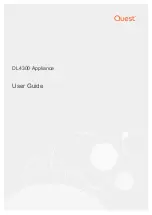
Rev. 1.00
160
September 11, 2018
Rev. 1.00
161
September 11, 2018
HT45F4050
A/D NFC Flash MCU
HT45F4050
A/D NFC Flash MCU
UART Setup and Control
For data transfer, the UART function utilizes a non-return-to-zero, more commonly known as NRZ,
format. This is composed of one start bit, eight or nine data bits, and one or two stop bits. Parity
is supported by the UART hardware, and can be setup to be even, odd or no parity. For the most
common data format, 8 data bits along with no parity and one stop bit, denoted as 8, N, 1, is used
as the default setting, which is the setting at power-on. The number of data bits and stop bits, along
with the parity, are setup by programming the corresponding BNO, PRT, PREN, and STOPS bits
in the UCR1 register. The baud rate used to transmit and receive data is setup using the internal
8-bit baud rate generator, while the data is transmitted and received LSB first. Although the UART
transmitter and receiver are functionally independent, they both use the same data format and baud
rate. In all cases stop bits will be used for data transmission.
Enabling/Disabling the UART Interface
The basic on/off function of the internal UART function is controlled using the UARTEN bit in the
UCR1 register. If the UARTEN, TXEN and RXEN bits are set, then these two UART pins will act
as normal TX output pin and RX input pin respectively. If no data is being transmitted on the TX
pin, then it will default to a logic high value.
Clearing the UARTEN bit will disable the TX and RX pins and allow these two pins to be used as
normal I/O or other pin-shared functional pins by configuring the corresponding pin-shared control
bits. When the UART function is disabled the buffer will be reset to an empty condition, at the same
time discarding any remaining residual data. Disabling the UART will also reset the error and status
flags with bits TXEN, RXEN, TXBRK, RXIF, OERR, FERR, PERR and NF being cleared while
bits TIDLE, TXIF and RIDLE will be set. The remaining control bits in the UCR1, UCR2 and BRG
registers will remain unaffected. If the UARTEN bit in the UCR1 register is cleared while the UART
is active, then all pending transmissions and receptions will be immediately suspended and the
UART will be reset to a condition as defined above. If the UART is then subsequently re-enabled, it
will restart again in the same configuration.
Data, Parity and Stop Bit Selection
The format of the data to be transferred is composed of various factors such as data bit length,
parity on/off, parity type, address bits and the number of stop bits. These factors are determined by
the setup of various bits within the UCR1 register. The BNO bit controls the number of data bits
which can be set to either 8 or 9, the PRT bit controls the choice of odd or even parity, the PREN
bit controls the parity on/off function and the STOPS bit decides whether one or two stop bits are to
be used. The following table shows various formats for data transmission. The address bit, which is
the MSB of the data byte, identifies the frame as an address character or data if the address detect
function is enabled. The number of stop bits, which can be either one or two, is independent of the
data length and is only used for the transmitter
.
There is only one stop bit for the receiver.
Start Bit
Data Bits
Address Bit
Parity Bit
Stop Bit
Example of 8-bit Data Formats
1
8
0
0
1
1
7
0
1
1
1
7
1
0
1
Example of 9-bit Data Formats
1
9
0
0
1
1
8
0
1
1
1
8
1
0
1
Transmitter Receiver Data Format
















































